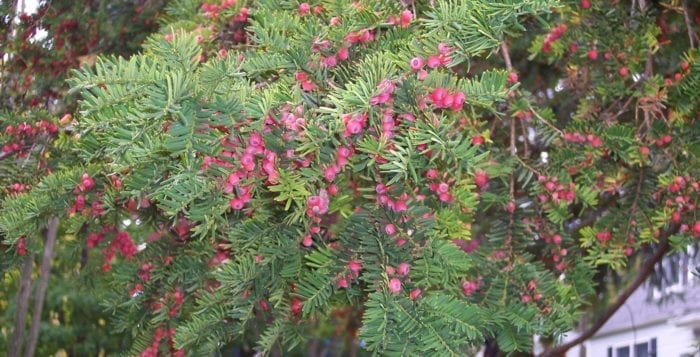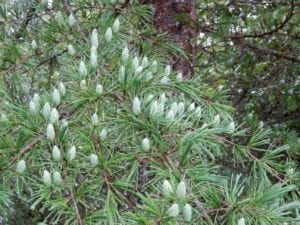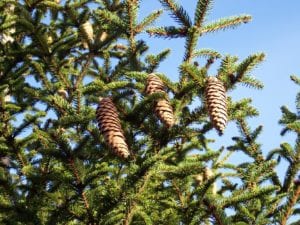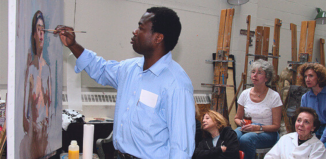Gardening: Adding conifers to your garden

By Ellen Barcel
As you plan your new garden consider adding one or more conifers. Conifers are trees that bear cones and have evergreen needles (actually modified leaves). Many are pyramidal in shape, meaning that they don’t usually grow into your utility lines. Since they are evergreen, they provide a year-round screen.
The cones contain the seeds for the next generation. Conifers include pines, cedars, cypresses, redwoods, spruces and yews. They are woody plants and, almost without exception, are evergreens. The main exception, the dawn redwood, loses its needles in autumn and sprouts new ones in the spring. Note, however, that not all evergreens are conifers (more about that in a future column).
Conifers were the dominant land plant until, evolutionary wise, they were overtaken by flowering plants. So, yes, conifers are older than flowering trees. It is thought that conifers were the main food of herbivorous dinosaurs. Today, the soft wood is used for lumber, furniture and paper. Even turpentine is made from the resin of conifers, mainly pine trees.

If you are unable to identify a particular tree, checking out the cones themselves may help you. For example, the cones of the golden deodar cedar are born upright on the branches and are just two inches long. The cones grow upright during the summer and fall to the ground in autumn. The cones of the Norway spruce are long, up to six or more inches long and slightly curved. The cones of some pines are short, round and stubby. Some cones don’t even look like the “typical” pinecone.
Since many people use cones for crafts, particularly around Christmas, growing conifers has another advantage: material for those wreaths and other craft projects. If this is your plan, make sure that the conifers you select will yield the type of craft material you want.
If you can’t grow a tree that has the specific cone you are looking for, crafts shops frequently carry them. For example, the tree with the largest cones is the Coulter pine. The cones can be 8 to 10 inches long and can weight four to 11 pounds (less when dried out). Since this pine’s natural environment is coastal California, this is one you need to buy from craft shops.

Depending on the variety of the tree, cones can form and mature in just a single growing season (like the golden deodar cedar) or can take up to two or three years. Most conifers have both male and female cones on the same tree. The male cones are generally smaller and produce pollen while the female cones are larger and produce the seeds. If you’ve ever used a closed pinecone in a craft and it gradually opened only to release the seeds all over your table or floor, you’ve got a female pinecone.
Conifers rarely need pruning, except to remove dangerous branches or a double or triple leader at the top of a pyramidal tree. If the conifer you’ve selected is very feathery, it needs careful pruning or it will look terrible. Feather the cuts. As always, it’s best to know the final size of your mature plant so that it doesn’t take over. You should not have to spend a ton of time pruning back overgrown plants.
Again, I recommend the Audubon Society’s guide to the trees of the eastern U.S. as an excellent reference. They have color photos of not only the needles of each conifer but of the cones as well. Next week, an overview of some specific conifers.
Ellen Barcel is a freelance writer and master gardener. To reach Cornell Cooperative Extension and its Master Gardener program, call 631-727-7850.






